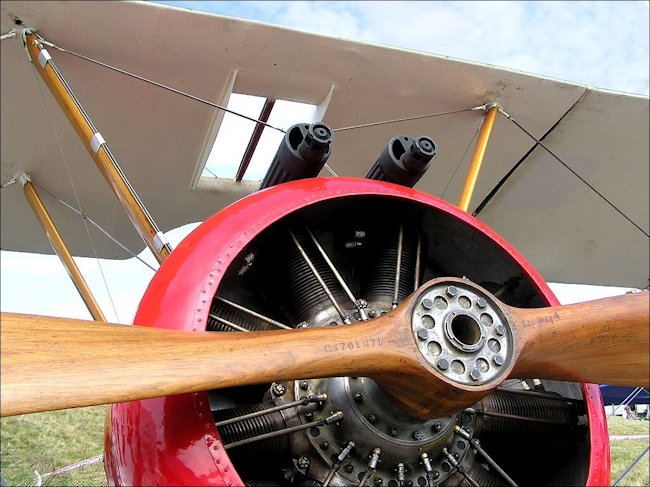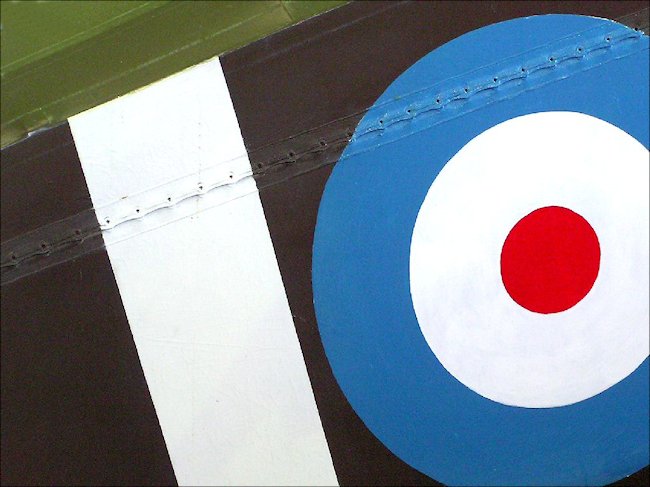The Sopwith Pup WW1 RFC Fighter Biplane
The Sopwith Pup was produced by Thomas Sopwith and his Sopwith Aviation Company in 1916. The design was based on the personal plane of the company's test pilot, Harry Hawker. The Pup was fast and easy to handle and as well as the Royal Flying Corps the Admiralty ordered it for the Royal Navy Air Service. The first Pups reached the Western Front in the autumn of 1916 allowing the enthusiastic British pilots to maintain their hard won domination until mid-1917 when newer German aircraft redressed the balance. ".no matter how good the German pilot was. when it came to maneuvering, the Sopwith Pup would turn twice to an Albatros' once." Lt J.T.B McCudden VC - British fighter ace. Officialdom hated the name Pup, thinking it undignified. They decreed the aircraft should only be referred to as the Sopwith Scout; this order did more than anything else to perpetuate the name Pup in history.
Much experimentation took place at sea with Pups, some were flown from tiny platforms built on gun-turrets of cruisers and on 2 August 1917 Sqn Cdr Dunning became the first man to land an aircraft on an aircraft carrier when he brought a Pup down on HMS Furious. Dunning was killed on his third landing when his machine crashed over the side of the ship. The Sopwith Pup remained in service until late 1917

The elegant Sopwith Pup was a design much beloved by pilots which flew it, one of the descriptions of the Pups handling being, "it was so light to the touch, if you sneezed, you looped". The Pup despite being underpowered with an 80 Hp LeRhone Rotary engine, having light construction and a slow firing Vickers, it was one of the few aircraft of the period that could compete with the German Albatros Scout on equals terms in early 1917.
The Pup was a single-seat fighting scout and the forerunner to the more famous Camel. It was named Pup because it looked like a baby 1 1/2 Strutter. The Pup was nearly perfect in flying qualities. Delightful to fly, very small, simple and reliable with a generous wing area for a good rate of climb and agility. It had excellent performance at height. It was soon underpowered for combat on the Western Front against Albatros DIIIs, but it could turn twice in the radius of a single turn by an Albatros. This aircraft established the reputation of Naval 8 RNAS in late 1916 when they racked up 20 kills. After removal from the front it was used as a Home Defense unit fighter against Zeppelins.

The Sopwith Pup quickly became a favorite with pilots of the Royal Naval Air Service. It was superior to the Fokker D.III and more than a match for any of the new Halberstadt and Albatros scouts. Armed with a single synchronous machine gun, it was lighter and less dangerous than it's successor, the Sopwith Camel. Although underpowered, pilots liked the plane because it was maneuverable and fast. It could climb and hold its altitude better than any other fighter. In August 1917, the Sopwith Pup was the first aircraft to land aboard a moving ship, the Royal Navy's H.M.S. Furious.

Thomas Sopwith was born in 1888. A pioneering figure in aviation, he won the Baron de Forest prize in 1910 for flying across the English Channel. In 1912 he founded the Sopwith Aviation Company at Kingston-on-Thames, where he designed and built several planes used during the first world war including the Sopwith Pup, Camel, Snipe. During the 1930's depression the Sopwith Company went bankrupt. Mr Harry Hawker one of Sopwith's test pilots put his name to the new company still based in Kingston. Sopwith became Chairman of the Hawker Siddeley Group in 1935 and was president of the Society of British Aircraft Constructors. Thomas Sopwith died in 1989.


Sopwith Pup books


Tweet